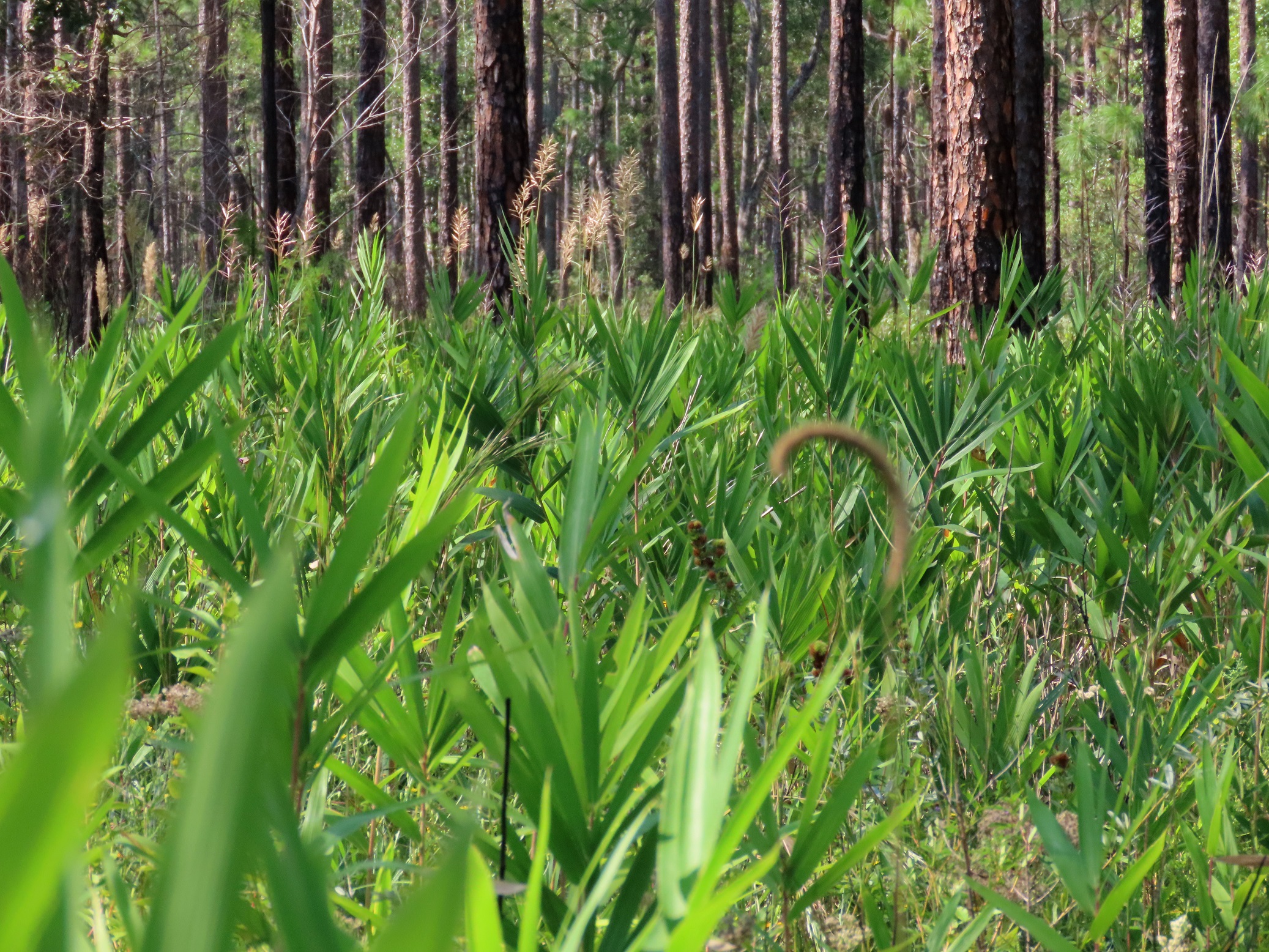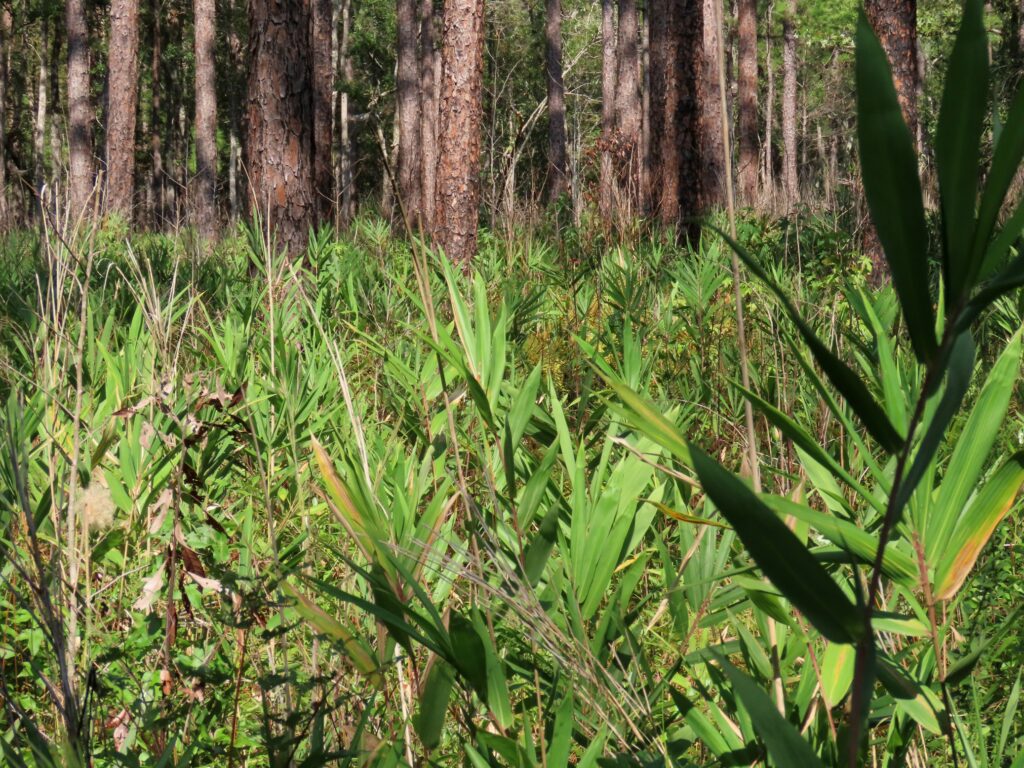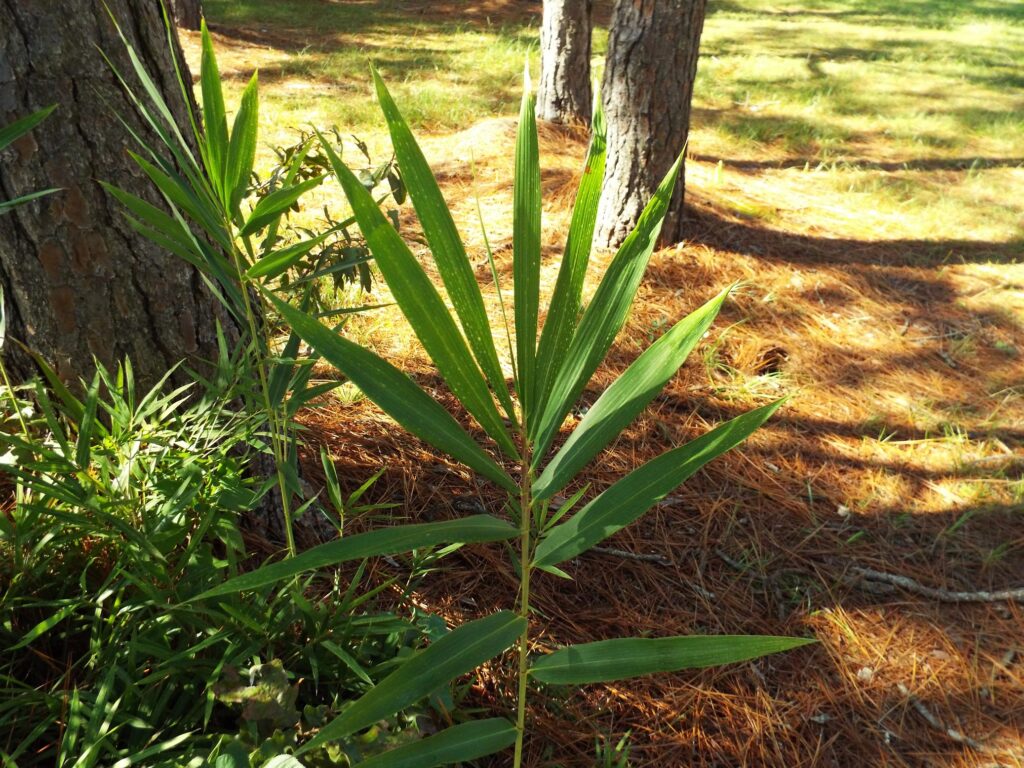


This week for Flora and Fauna Friday we have our native analogue of the iconic grass of the orient, River Cane (Arundinaria gigantea).
River Cane is a large woody grass in the Bamboo genus. It grows in dense thickets, called canebrakes. Canebrakes are found beneath the canopy of floodplain and flatwood forests or on the borders of shallow wetlands. Cane primarily spreads through its roots using underground rhizomes. It only rarely, and somewhat randomly, blooms to produce seeds. River Cane can exceed 30ft in height in extreme cases but ‘round our parts it’s usually between 5ft and 10ft. In the Lowcountry we typically see the subspecies Switch Cane (A. gigantea tecta), which is notably smaller than the Giant Cane subspecies (A. gigantea gigantea).
Like all bamboos, River Cane has a hollow cylindrical stem divided into internal chambers every 6in or so. This growth form lends the plant a rigid but flexible stem that’s very resource efficient. These stems makes the plant an incredibly versatile resource for tool making. It was used to make arrow shafts, pipes, baskets, and innumerable other contraptions by Native Americans. In modern times, I’ve used it with great success both as garden stakes and the chambers for bee motels.
River Cane is a critical plant for wildlife habitat. As previously alluded to, the hollow stems provide nesting habitat for native bees, wasps, ants, and spiders. The canebrake is a habitat used extensively for cover by rodents, frogs, and songbirds. The presence of small bite-sized critters naturally attracts their predators, which include the Canebrake Rattlesnake. A snake so named for its preference for these thickets. Cane thickets are the favored nesting and foraging habitat of the Swainson’s Warbler, Hooded Warbler, and the now extinct Bachman’s Warbler. River Cane is also the host plant for the larvae of six butterfly species, the Creole & Southern Pearly-eyes; the Yehl Skipper; and the Carolina, Reversed, & Lace-winged Roadside-Skippers.